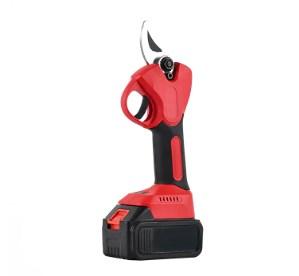In the bustling environment of a workshop, the hum of machinery is often an expected and accepted part of the atmosphere. However, when it comes to electric carpentry tools, the noise levels they produce can have a significant impact on the work environment and the health of the workers. Understanding the noise levels of these tools is crucial for ensuring a safe and productive workspace.
Noise is measured in decibels (dB), and the acceptable noise level can vary depending on the duration of exposure and the specific environment. For instance, prolonged exposure to noise levels above 85 dB can lead to hearing damage. In contrast, a quiet library might have a noise level of around 30 dB, while a busy street can reach up to 70 dB. Electric carpentry tools, depending on their type and power, can range from relatively quiet to quite loud.
One of the quietest electric carpentry tools is the cordless drill, which typically operates at around 70 to 80 dB. This is comparable to the noise level of a vacuum cleaner and is generally considered safe for extended use without hearing protection. However, as the power and complexity of the tool increase, so does the noise level. For example, a powerful circular saw or a table saw can generate noise levels between 90 to 100 dB, which is similar to the sound of a motorcycle engine and requires hearing protection.
The design and construction of electric carpentry tools play a significant role in determining their noise levels. High-quality tools with well-engineered motors and noise-reducing features can operate at lower decibel levels. Additionally, the use of brushes in electric motors can contribute to higher noise levels, whereas brushless motors are quieter and more efficient.
Another factor to consider is the environment in which the tools are used. An enclosed space, such as a small workshop, can amplify the noise, making it seem louder than it would in an open area. Furthermore, the duration of use is also a critical factor. Even tools with relatively low noise levels can become problematic if used for extended periods without proper hearing protection.
Manufacturers of electric carpentry tools are increasingly aware of the need to reduce noise levels to improve the user experience and comply with health and safety regulations. Many are incorporating advanced technologies and materials to minimize noise output. For example, some tools now feature sound enclosures or dampening materials that absorb and reduce the noise generated during operation.
Users of electric carpentry tools also have a responsibility to manage noise levels effectively. This includes using hearing protection, taking regular breaks to give ears a chance to recover, and maintaining tools to ensure they operate efficiently and quietly. Regular maintenance not only prolongs the life of the tool but can also prevent unnecessary noise caused by worn or damaged parts.
In conclusion, the noise levels of electric carpentry tools are an essential consideration for anyone working in the woodworking industry. From the quiet operation of a cordless drill to the more substantial noise output of a table saw, understanding and managing these levels is crucial for maintaining a safe and healthy work environment. As technology advances, we can expect to see further improvements in the noise reduction of electric carpentry tools, making them even more user-friendly and safe for all craftsmen.
